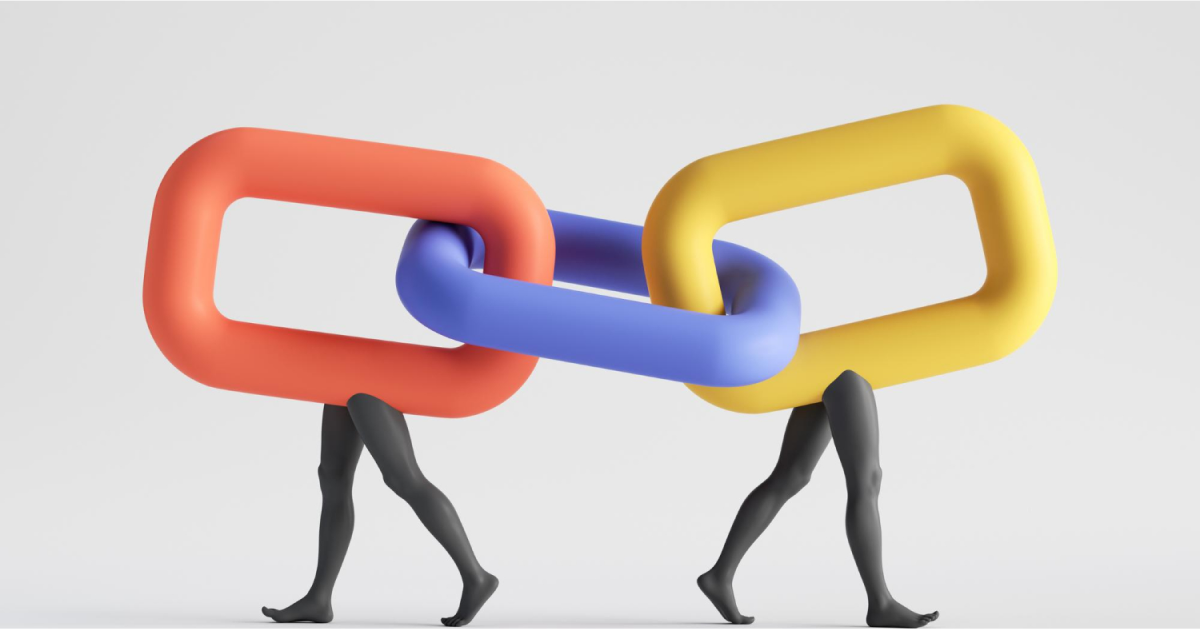What is people science in HR? A complete guide to incorporating it into employee engagement

"People are definitely a company's greatest asset," said Mary Kay Ash, and you know what? She was spot on!
But then there's Albert Einstein with his gem: "Not everything that can be counted counts, and not everything that counts can be counted."
Trying to manage people in a company often feels like juggling these two ideas. On one hand, we want to treat our workers as our biggest asset. On the other hand, we need to figure out how to measure all the complex stuff that makes them tick.
This is where people science comes in. In this blog, we’re going to dive into what people science is and how it can revolutionize your HR game in the contemporary world.
What is people science in HR?
People science in HR refers to the systematic study of human behavior and interactions within the workplace, using data-driven approaches to inform and improve HR practices. This interdisciplinary field merges principles from psychology, sociology, anthropology, and organizational behavior with advanced analytics to gain deeper insights into the workforce.
Personnel research aims to understand and optimize the experience endured by the employee by leveraging empirical research and scientific methodologies over many years. At its core, workplace psychology is about making HR practices more effective and evidence-based.
Much like data science, it seeks to identify patterns, predict outcomes, and provide actionable insights that can enhance various aspects of HR, including recruitment, organizational development, retention, and overall organizational effectiveness.
By employing rigorous scientific methods, employee engagement analytics helps HR professionals move beyond intuition and anecdotal evidence, enabling them to implement strategies that are both innovative and empirically validated. Importantly, people science also focuses on improving occupational health and overall employee well-being, ensuring a healthier and more productive workforce.
Now, let’s take Google as an example. Google’s People Operations team is a perfect illustration of how organizational behavior studies can be applied in real life. They dig through heaps of records to figure out what makes a great manager.
After tons of research and number-crunching, researchers pinpointed specific behaviors that successful managers exhibit, like being a good coach and empowering their team without hovering over them all the time.
With this support, Google rolled out training programs tailored to develop these key behaviors in their managers. The result? Happier workers and better performance across the board. By harnessing the power of talent analytics,
Google doesn’t just make random talent acquisition decisions—they make smart, choices driven by information that really boost the employee experience and overall effectiveness of the company. This approach creates a positive work environment and plays a huge role in the company’s success, showing the critical support involved that this method provides in transforming HR practices.
Difference between people science and people analytics

While people science and people analytics often get mixed up, they actually represent different but complementary approaches in HR. People analytics focuses on numbers, collecting and analyzing information related to employee performance, engagement, and other HR metrics.
It’s about gathering information, spotting trends, and generating reports. For instance, people analytics might track absenteeism rates, employee turnover, or training effectiveness. This gives the recruiting team a clear snapshot of the workforce, highlighting areas that need attention and providing a solid foundation for decisions driven by insights.
People science, however, digs deeper. It not only looks at the information but also applies scientific principles and theories to understand and develop evidence-based approaches. This practice is all about comprehension the “why” behind the information, exploring the root causes of observed trends and behaviors.
For instance, if people analytics shows high turnover rates in a department, it would investigate why this is happening, examining management practices, workplace culture, job satisfaction, health or external factors.
So, while people analytics provides the raw figures and points out trends, science uses that information to drive meaningful change and innovation in recruiting.
This practice blends quantitative analysis with qualitative research, like employee surveys and interviews, to get a complete picture of employee behaviors and motivations. By integrating both approaches, we can create more effective HR policies, boost employee engagement, and foster a positive organizational culture.
How is people science linked to employee engagement?

Let’s talk about employee engagement, the secret sauce for productivity and retention. Personnel research is crucial here as it helps us understand what makes workers happy and motivated. By analyzing employee behavior, feedback, and performance, people scientists can identify what drives engagement. Think of them as workplace detectives, solving the mystery of what makes staff members tick.
It could be work-life balance, recognition, or career development opportunities. Once we know what's influencing engagement, we can create targeted programs to boost it. For example, if the workers feel undervalued, we might set up recognition programs like Employee of the Month awards or shout-outs during meetings. If burnout is a big issue, we could manage workloads better or introduce wellness programs and yoga sessions.
This approach allows us to make informed decisions that really make a difference. When employees feel valued and motivated, they perform better, creating a win-win situation for everyone. Engaged employees provide better service for customers, fostering stronger customer relationships and loyalty. This, in turn, drives improved satisfaction for customers and business success.
What do people scientists do?
What does a people scientist do? Think of them as the Sherlock Holmes of HR, using science and insights to solve workplace mysteries. Their mission is to discover the secrets behind employee behavior, engagement, and performance to promote a good workplace platform.
- Data collection: Despite few challenges, people scientists gather information from recruiting systems, surveys, and employee feedback using advanced technology. They collect performance metrics, engagement scores, and exit interview observations, ensuring accuracy and reliability to start their investigation and make employees' lives easy.
- Analysis: They dive into it by using statistical and computational tools to uncover patterns and trends. Education methods like machine learning algorithms and regression analysis help them connect the dots, revealing the bigger picture, much like Sherlock piecing together clues.
- Research: People scientists conduct original research, studying workplace behavior, motivation, and culture through experiments and case studies. This partnership provides a deeper interpretation of what's really going on, like mini experiments to figure out what makes the workers tick.
- Strategy development: Armed with their findings, they develop evidence-based plans to improve HR practices. These approaches are grounded in solid evidence and tailored to address specific needs identified through their analysis.
- Implementation: They work with HR teams to implement these approaches, ensuring effective rollout and engagement with the staff. They see the case through to the end, making sure solutions work in the real society.
- Continuous improvement: Finally, they continually monitor outcomes and make adjustments as needed, ensuring HR practices stay effective and responsive. This cycle of continuous improvement partnership refines and enhances HR tactics over time using the latest technology.
Importance of integrating people science into HR

Why should we care about integrating people science into HR? Great question! Picture navigating a vast ocean of employee information without a compass. It’s guesswork, intuition, and luck. This method is a compass, providing direction and precision. Here’s why integrating it into HR is a game-changer:
- Informed decision-making: Without raw material, HR decisions can be guesswork. Integrating this method means basing decisions on solid revelations, not hunches. This platform leads to more effective interventions and approaches, improving outcomes in promotions, team structures, and benefits.
- Improved employee experience: Understanding employee needs allows HR to design better policies. It’s like having a cheat sheet for employee happiness. Data-driven observations can address specific issues like work-life balance, leading to more satisfied workers who feel understood. Additionally, integrating people science can also explore alternative medicines to improve health outcomes and employee well-being.
- Enhanced performance: Information identifies skill gaps, enabling targeted training programs that boost productivity. It’s like having a personal trainer for your workforce, ensuring everyone performs at their best.
- Retention and engagement: People science can significantly improve engagement and reduce turnover. Knowing what drives engagement helps create initiatives that make staff feel valued, fostering loyalty and commitment. Engaged workers are less likely to leave, reducing turnover and disruption.
- Competitive advantage: Leveraging this method gives companies an edge in attracting and retaining top talent. Information-driven discernment help understand what makes a company attractive and keeps staff happy, fostering innovation and productivity.
In summary, integrating people science into HR transforms guesswork into informed action, enhancing the employee experience, boosting performance, improving engagement and retention, and providing a competitive edge.
How people science in HR can empower your organizational culture?
This can transform your organizational culture by fostering transparency, inclusivity, communication, continuous improvement, and engagement. Here’s how:
Creating transparency
First, is transparency. HR using information to inform practices and decisions builds a culture of openness and trust. Workers appreciate knowing that promotions, raises, and performance evaluations are based on objective inputs, not office politics or gut feelings. This recruitment process clarity fosters trust and a sense of value among the staffs.
Promoting inclusivity
Next, inclusivity. People science helps identify and address biases in HR processes, promoting a more inclusive workplace. By analyzing facts, companies can uncover and correct hidden biases in recruitment, promotions, and other areas, fostering diversity and equity.
Enhancing communication
Good communication is essential, and people science can improve it. Information-driven understanding help tailor communication to be more effective and employee-centric. Perceiving different communication styles allows HR to connect better with the workers, ensuring messages resonate across the board to meet their welfare.
Encouraging continuous improvement
A culture that values details and evidence-based tactics is always looking to improve. People science fosters continuous improvement, exploring alternative medicines, using feedback and information to refine HR practices constantly. This keeps the organization dynamic and responsive to changing needs and expectations.
Building engagement
Engagement is crucial. People science helps identify what drives employee engagement, addressing factors like work-life balance, recognition, and career development. Valued and motivated workers are more likely to excel, benefiting the entire organization.
CultureMonkey exemplifies how people science can enhance employee engagement:
- Data-driven insights: CultureMonkey uses analytics to provide actionable observations into employee engagement, focusing HR efforts on what matters most.
- Real-time feedback: Continuous feedback tools help organizations address concerns promptly, enhancing the employee experience.
- Customizable surveys: Scientifically-backed surveys capture meaningful observations into employee sentiments and experiences.
- Advanced analytics: Sophisticated algorithms predict trends in engagement, allowing proactive issue management.
- Targeted interventions: Recommendations for targeted interventions are based on information insights, addressing specific needs and challenges.
In summary, integrating people science into HR fosters a more transparent, inclusive, communicative, and engaged culture. Tools like CultureMonkey leverage these observations to drive positive change and improve the employee experience.
Conclusion
As Peter Drucker famously said, "What gets measured, gets managed." People science not only measures but also provides the foundation to manage and improve an organization’s most important asset: its people. By embracing this method, HR can make informed decisions, foster a thriving workplace culture, and drive success.
Whether aiming to boost engagement, retain top talent, or create a dynamic workplace, talent analytics offers the necessary tools and perceptions. Platforms like CultureMonkey integrate these scientific principles to transform HR practices and empower organizations.
People science brings a holistic, evidence-based approach to HR, blending data analytics with human-centric strategies. It’s about understanding workforce dynamics and creating an environment that attracts, retains, and nurtures talent. Leveraging this method, companies can unlock new levels of productivity, engagement, and success.
The future of HR is bright and grounded in science.



